
| The Greek islands | Naxos HOME | Naxos Hotels | Naxos Beaches | Naxos History | Naxos Sights | Naxos Travel |
| Naxos Chora | Naxos Restaurants | Movies of Naxos island | Movies of Naxos Beaches |





|
Google Chrome thinks enlarging my pictures, some links and sometimes scrolling through the pages is a popup. If you want to navigate my website than please allow "popups". |
| The sights of the island of Naxos in Greece |
 |
 |
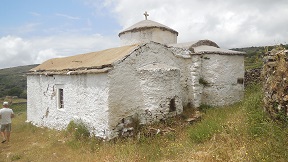 |
 |
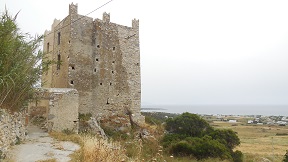 |
 |
 |
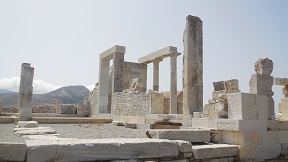 |
 |
 |
|
From the ancient city of Naxos is hardly anything left that can be detected nowadays. Interesting is the 6-meter-high marble Portára port on the island Palatia that dominates the harbour of Naxos Town. It dates from around 525 BC. Built as a temple entrance (of presumably for the god Apollon), it was never completed after the fall of Lygdamis. The medieval town is situated above the harbour and is further divided into the Venetian Kastro, where once the Catholic nobility lived and the Bourgo, where the indigenous Greeks lived. The 18th-century Orthodox cathedral in the Bourgo, Mitrópoli Zoödóchou Pígis (meaning the life giving source), possesses a remarkable iconostas painted by Dimítrios Válvis, a painter from the so-called School of Crete. The Kastro with another twenty imposing mansions can be seen, decorated with the coat of arms of the Venetian nobles who lived there. Members of the family of the Duke Sanudo lie buried in the 13th-century Catholic cathedral in the Kastro. In the palace of the Sanudo (in its present form from 1627) has long been a school and housed the writer Nikos Kazantzakis as the most famous pupil. Now there is the Archaeological Museum with a fine collection of marble sculptures from the Cycladic civilization. The village Apollonas, 48 km from Naxos city on the north coast of the island, is located at the site of an ancient settlement with a shrine for the god Apollon. A staircase leads to the ancient marble place where from about 600 BC the unfinished statue of a kouros has been laying. Only the contours are finished. The 10.5 m long and 30 tonnes heavy image suggests a bearded figure, maybe picturing the god Dionysus (because Apollon is almost never shown with a beard). After a sculptor found a structural mistake in the marble, making it unusable, they stopped working on it and left the statue behind unfinished. A similar and equally large-screen Apollon stood up to the Hall of the the people of Naxos on Delos. The village Apiranthos, 25 km southeast of Naxos City, was founded in the 17th century by Cretans while fleeing the Turks. The attractive village has beautiful, marble paved streets and an apartment built by the Venetian family Crispi. Men still often bear the traditional costume. There is also a small museum with an archaeological and geological department. In the village Melanes, which is located 8 kilometers southeast of Chora, there is another (6.4 meters tall) kouros. This kouros is more detailed. The statue dates from the 7th century BC and in the area there is also a sanctuary and a marble quarry. Near the top of a hill a second kouros statue, but we could not reach it because of the rain which had put part of the route under water. The village of Apiranthos, 25 km south-east of Naxos town, was founded in the 17th century by Cretans fleeing from the Turks. They came to work there in the amaril mines that are located nearby. The attractive village has beautiful marble-paved streets and residential towers built by the Venetian family Crispi. people often still wear the traditional costume. There is also a small museum with an archaeological and geological department. |
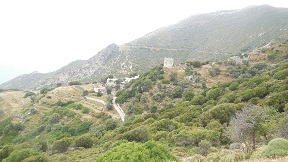 |
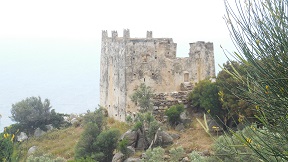 |
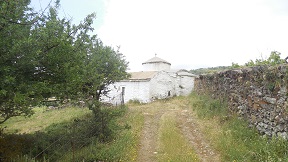 |
 |
 |
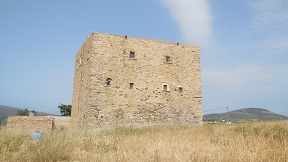 |
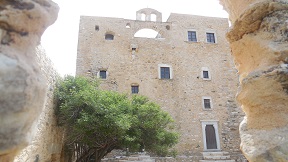 |
 |
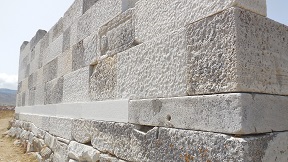 |
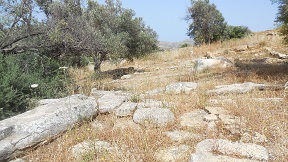 |
|
Scattered over the island there are several old Byzantine churches. Often they are located close to pretty little villages and some of them contain some beautiful frescoes. In Sangri, southwest of Chora, just south of Vivlos, there is a medieval castle and a church dating from the 13th century with well-preserved frescoes. On the route from the Venetian Bazeos tower to the Dimitra temple on the left side of the road there is the small Byzantine chapel of Agios Ioannis Theologos. One of the most beautiful and the oldest cathedral on the island is the Agios Mamas church in Potamia. We visited the white-painted Byzantine church in the deserted village Sifones (on the route from Koronas to Moni). Here the door was open, and inside the church were still visible remains of beautiful frescoes. At 1.5 kilometers distance of Sangri is one of the main attractions of the island of Naxos, Dimitra's Temple, which dates back to 530 BC. The marble temple dedicated to the goddess Dimitra, the goddess of agriculture and harvest, is still largely intact (50% of the old building blocks are still on the site). It was built during the reign of the tyrant Lygdamis, who also ordered the construction of the temple in Naxos town, of which now only the gate is still standing. In the 6th century AD, the temple was converted into a church. On the site of the temple is a museum, but it was closed when we were there in May. |
© Hans Huisman, https://www.angelfire.com/super2/greece/ 2018